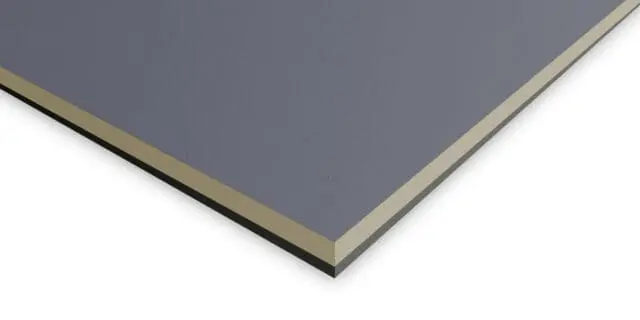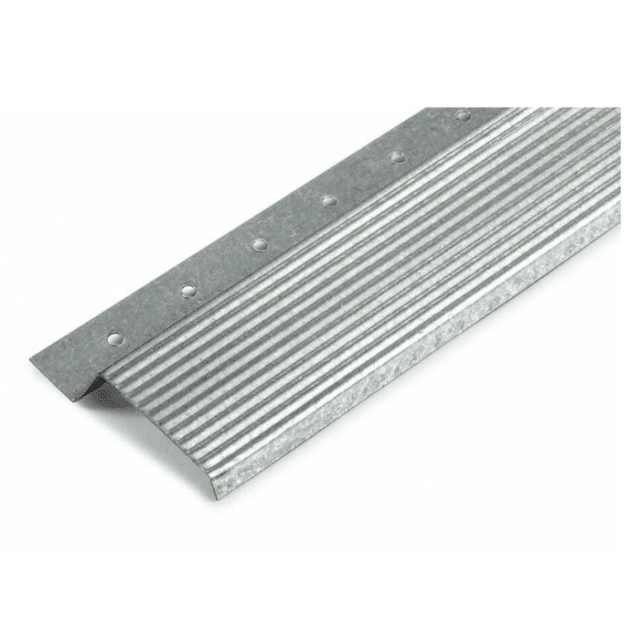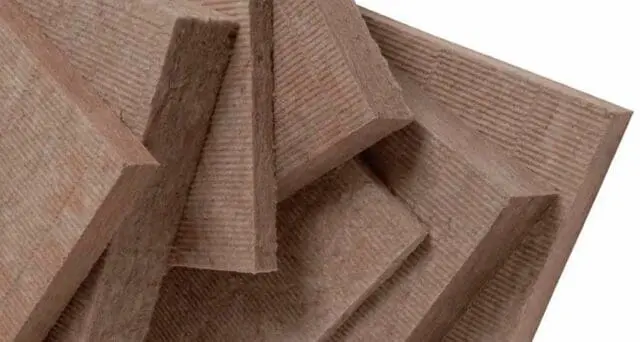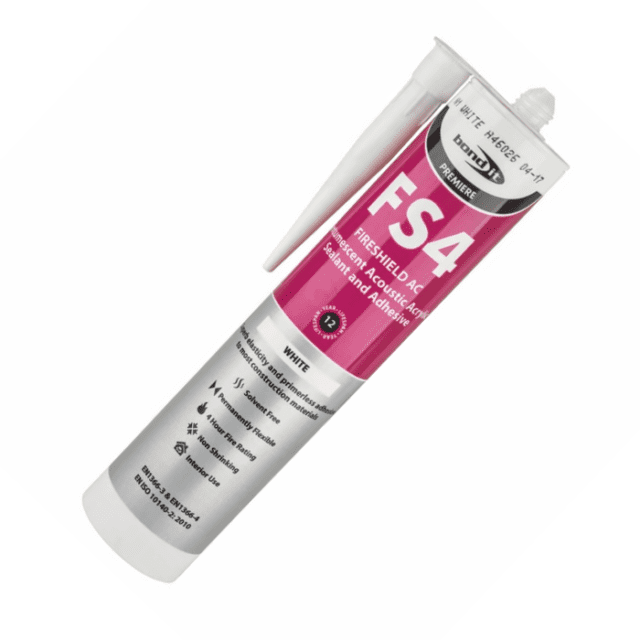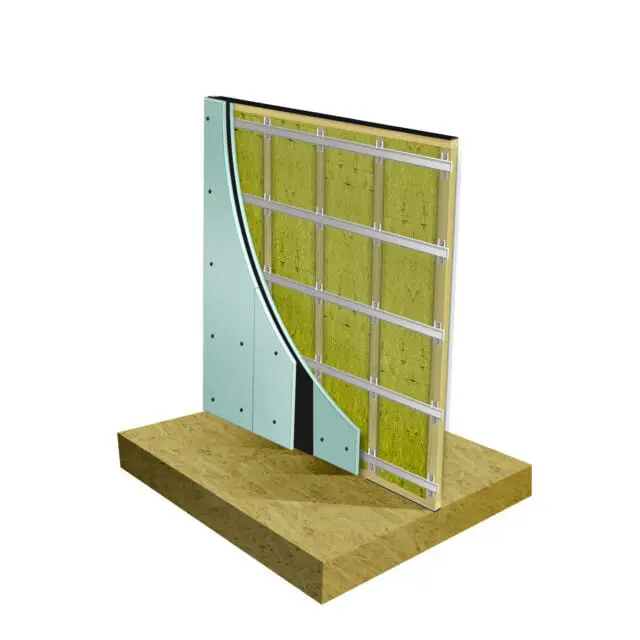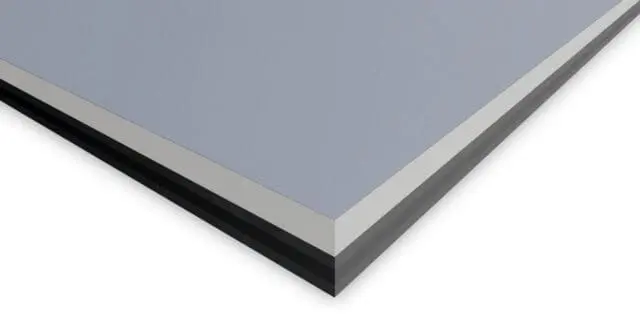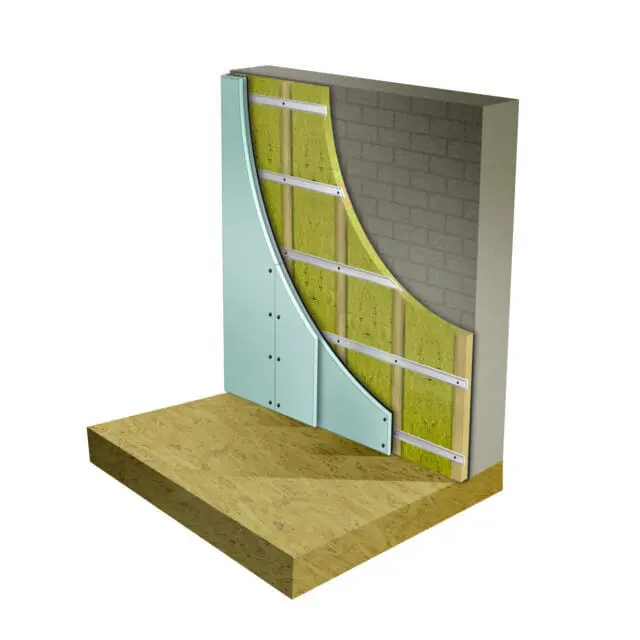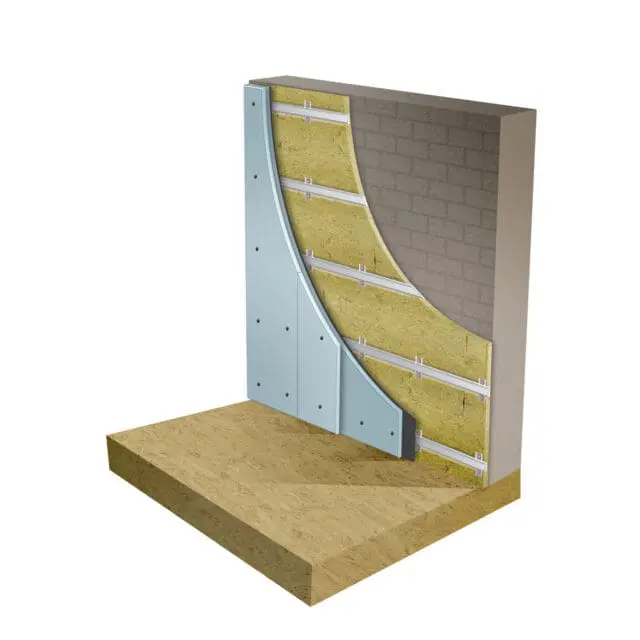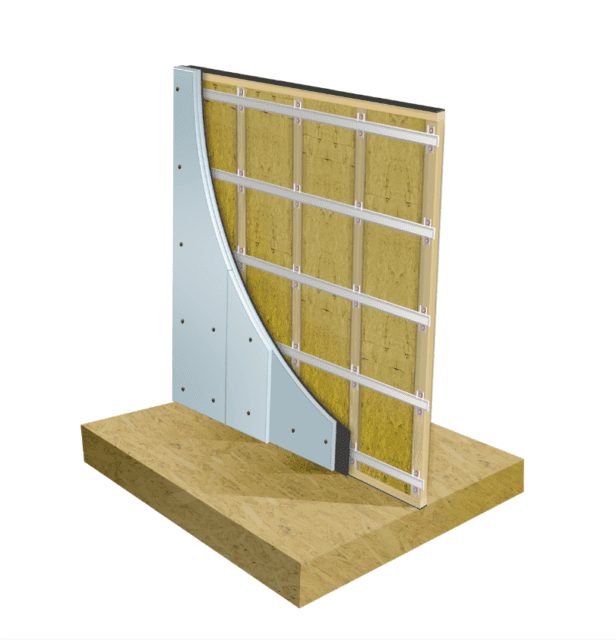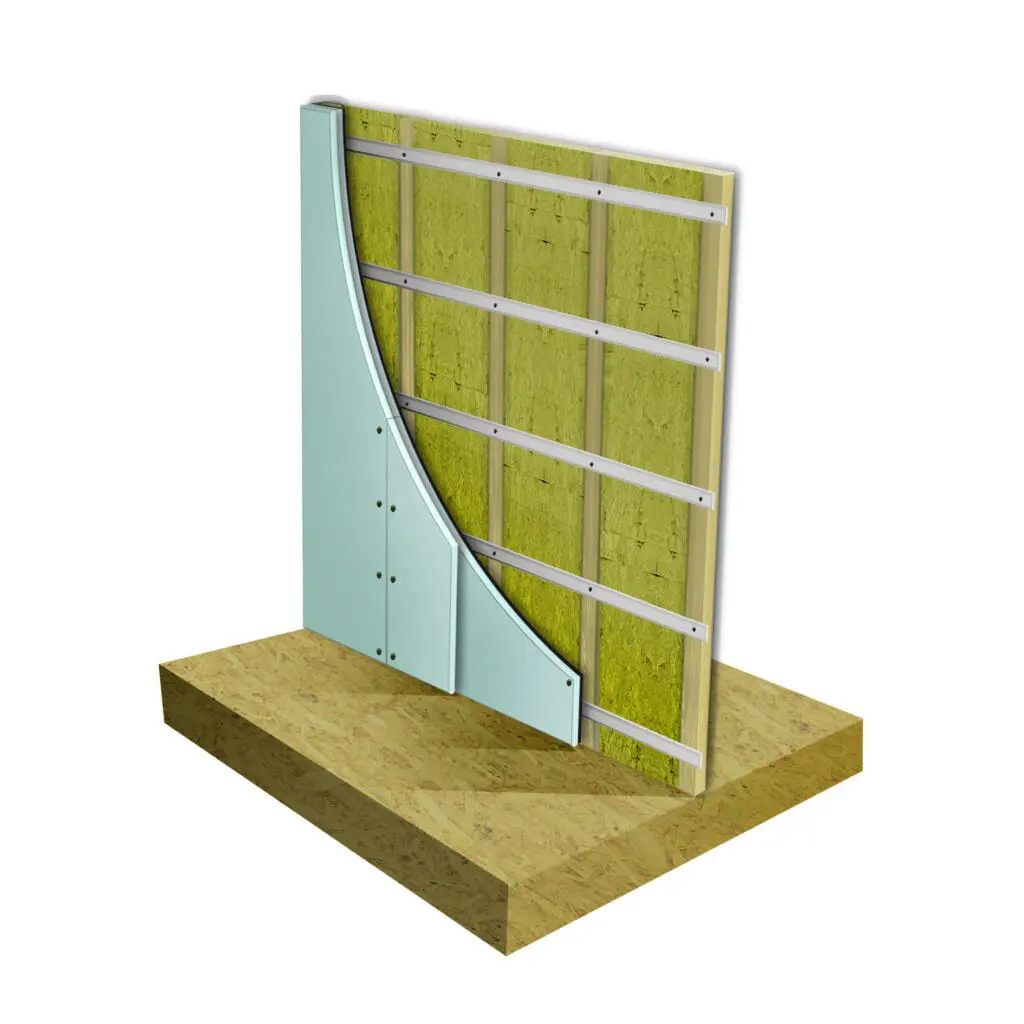
Stud Wall Kit DFM Acoustic Insulation
£214.89 – £772.55 ex. VAT
Estimated Delivery: 3 - 5 Days
(9th Jul - 11th Jul)
Buy a soundproofing system and save on buying the products individually Noisestop Systems Stud Wall Kits provide a comprehensive solution for superior noise reduction in internal stud walls, effectively blocking unwanted sound transfer. This all-in-one soundproofing solution incorporates Soundbreaker Bars to decouple and isolate the stud frame from the soundproof boards, minimising sound vibrations through the wooden structure. The DFM acoustic infill between the timber studs significantly reduces airborne noise. The acoustic wall is completed with two layers of soundproof boards, adding mass and sound damping: the Noisestop 1 Plus Panel, featuring 10kg mass-loaded vinyl bonded to 12.5mm soundblock plasterboard and an additional 12.5mm acoustic soundblock plasterboard. Each kit also includes acoustic sealant tubes to seal the wall properly for optimal performance, ensuring a complete and effective soundproofing solution. Buy a soundproofing system and save on buying the products individually.
Noisestop Systems Stud Wall Soundproofing Kit – Slim Profile Acoustic Solution for Stud Walls
Create quieter, more private spaces with the Noisestop Systems Stud Wall Soundproofing Kit, a high-performance sound insulation system for both new and existing stud walls. This space-saving solution features a slimline profile without compromising acoustic performance, making it ideal for reducing noise transfer between rooms in homes, offices, or commercial properties.
This advanced soundproofing kit combines key sound-blocking and absorption components, including high-density acoustic insulation, Soundbreaker resilient channels, and the Noisestop 1 Plus Panel – an innovative acoustic board engineered to block airborne sound effectively. Together, these layers disrupt sound vibrations, significantly improving wall sound insulation and enhancing room-to-room privacy.
Why Choose Noisestops Stud Wall Soundproofing System
- Slimline design – perfect for where space is limited
- Reduces airborne noise such as talking, TVs, and music
- Ideal for soundproofing partition walls, bedroom walls, home offices, and more
- Suitable for DIY and professional installation
- Effective upgrade for existing stud walls or as part of new construction
Use the Noisestop Stud Wall Soundproofing Kit to soundproof internal partition walls, reduce noise from noisy neighbours, or create private work or relaxation spaces. Whether converting a room or upgrading a wall, this kit is a reliable, easy-to-install solution.
Materials supplied with this system:
- Acoustic insulation 50mm/60kg/m3 – High-density sound insulation slabs
- Soundbreaker bars 3m – Decoupling channel to isolate the stud frame from the boarding
- Noisestop 1 Plus Panel 18mm 1200mm x 1200mm (1.44sqm) – 12.5mm soundboard laminated with 10kg mass-loaded vinyl
- 12.5mm Acoustic plasterboard 1200mm x 1200mm (1.44sqm) – Denser than standard plasterboard
- Acoustic sealant 310ml
Select the required Total Wall Area from the dropdown box at the top of the page to see the quantities supplied with this system.
We recommend ordering areas individually and adding them to the basket rather than adding them to one large area. You can order multiple areas in the same order.

Quantity of materials supplied in your order
| Area m2 | DFM 50mm/60kg (6.48sqm per pack) | Soundbreaker Bars 3m | Noisestop 1 Plus Panel 18mm (1.44sqm) | 12.5mm Soundboard (1.44sqm) | Acoustic sealants (310ml standard size) |
|---|---|---|---|---|---|
| 5 | 1 | 5 | 4 | 4 | 2 |
| 6 | 1 | 6 | 5 | 5 | 2 |
| 7 | 2 | 7 | 5 | 5 | 2 |
| 8 | 2 | 8 | 6 | 6 | 2 |
| 9 | 2 | 9 | 7 | 7 | 2 |
| 10 | 2 | 10 | 7 | 7 | 2 |
| 11 | 2 | 11 | 8 | 8 | 2 |
| 12 | 2 | 12 | 9 | 9 | 2 |
| 13 | 3 | 13 | 10 | 10 | 3 |
| 14 | 3 | 14 | 10 | 10 | 3 |
| 15 | 3 | 15 | 11 | 11 | 3 |
| 16 | 3 | 16 | 12 | 12 | 4 |
| 17 | 3 | 17 | 12 | 12 | 4 |
| 18 | 3 | 18 | 13 | 13 | 4 |
| 19 | 3 | 19 | 14 | 14 | 4 |
| 20 | 4 | 20 | 14 | 14 | 4 |
- System thickness 47mm (from the stud frame)
- Noise reduction 55dB
- Fire One hour
Thermal Resistance R:
- Acoustic plasterboard 12.5 mm = 0.050 m2 K/W
- Acoustic plasterboard 15.0 mm = 0.060 m2 K/W
- Mass-loaded vinyl 0.14 m² K/W
- Acoustic insulation 2.90 W/mK
Thermal Conductivity λR:
- Acoustic plasterboard 0.25 W/mK to BS EN 12524:2000
- Mass-loaded vinyl 0.037 W/mK
- Acoustic insulation 0.034 W/mK
Reaction to Fire
- Acoustic plasterboard 12.5mm & 15mm Euroclass A2-s1, d0
- Mass-loaded vinyl 10kg EN 13501-1 B-s2,d0 (2)
- Acoustic insulation EN13501-1: A1
Untreated stud wall DnT,w
Stud wall with 12mm plasterboard on either side 38dB
Treated stud wall DnT,w
50mm Stud Wall System 55dB
Improvement DnT,w
Noise reduction with treatment 17dB
Note: Every 10 decibels(dB) reduction in noise level is roughly perceived as a halving of the perceived loudness. So, for instance, if you have a sound that measures 70dB and it decreases to 60dB, it would sound about half as loud to the human ear. Decibels explained.
Apply the stud wall soundproofing system to new or existing stud walls.
If you are installing the system onto an existing wall, you must remove the plasterboard from one side of the wall. If you are building a new stud wall, apply isolation strips to the perimeter of the frame.
Reduce potential flanking paths by insulating the floor and ceiling cavity with acoustic insulation slabs.
- Remove the plasterboard from one side of the wall if you are soundproofing an existing wall.
- Use the Isolation Strips around the new stud frame to install a new stud wall.
- Infill the stud cavity with acoustic insulation, ensuring the whole area is filled. If you cut the slabs wider than the opening, they will friction fit between the studs.
- Fit the soundbreaker bars at 600mm centres and approximately 50mm from the floor and ceiling. The bars are attached to the frame by screwing through the pre-drilled holes.
- Attach the first layer of boarding to the bars using drywall screws through the boards into the wide corrugated flange on the soundbreaker bar.
- Attach the second layer of boarding using the same method, staggering the joints of the first layer where possible.
- When attaching the boards, leave a 3mm gap around the wall’s perimeter, and fill the gap with acoustic sealant upon completion.
- The wall can be finished as with standard plasterboard before decorating.
- Electrical outlets can be installed into the wall, and acoustic putty pads can be used to ensure the acoustic integrity of the wall.
Due to the nature of most of the materials we supply, orders are typically delivered on pallets.
All orders will be carefully wrapped, protected, and securely palletised to ensure they arrive in the best possible condition. Goods will be delivered as near to the property as possible. The drivers will not be able to carry orders into your property.
Deliveries are made between 8:00 a.m. and 6:00 p.m., Monday to Friday.
We charge a flat delivery rate of £60 plus VAT for palletised deliveries. We do not charge per pallet, regardless of the number of pallets used to deliver your order.
Orders placed for items weighing less than 20kg will be sent via courier for £20 plus VAT.
We have a high stock level and typically deliver orders in approximately three to four working days.
If you would like to speak with us about your delivery, please call 01423 339163. Alternatively, you can send us your delivery enquiry.
Please review our full delivery terms for more information.
Got a question?
Send us a message, and we’ll respond as soon as possible. Alternatively, call 01423 339163 to speak with an adviser.

